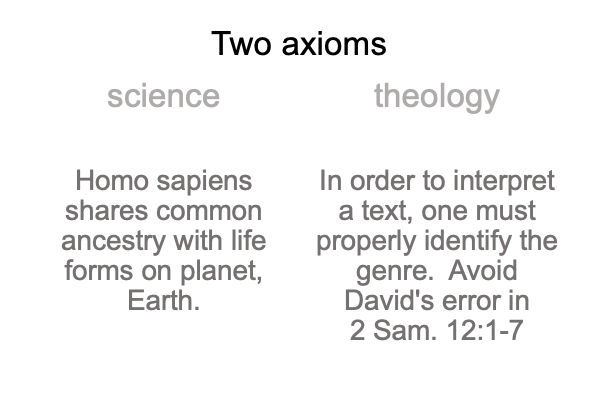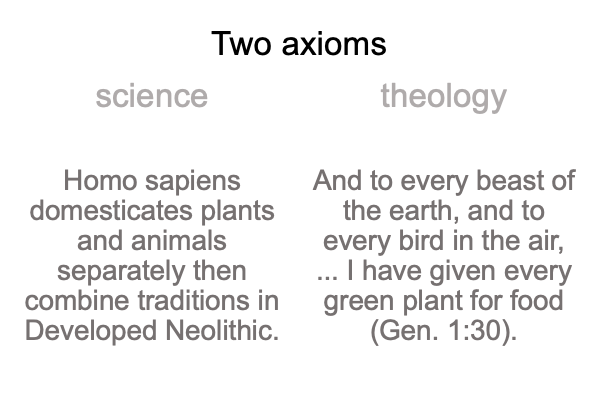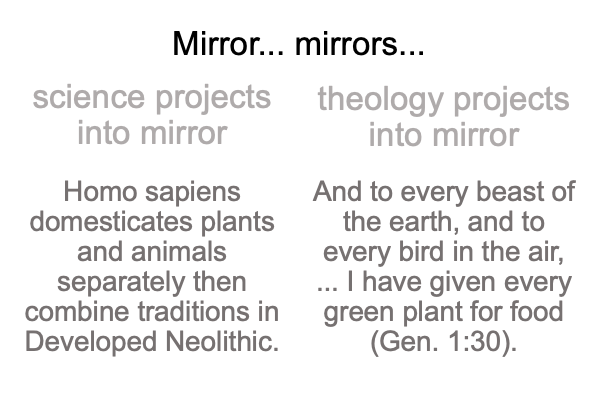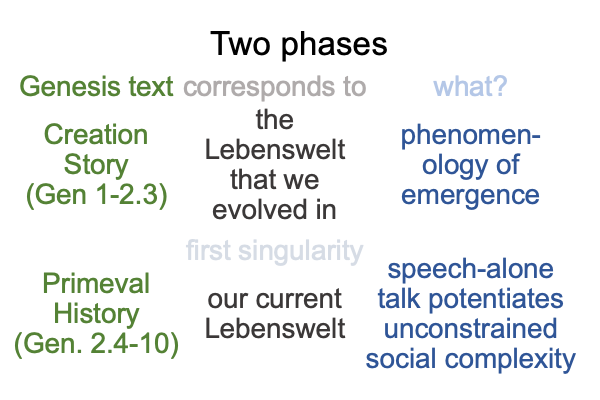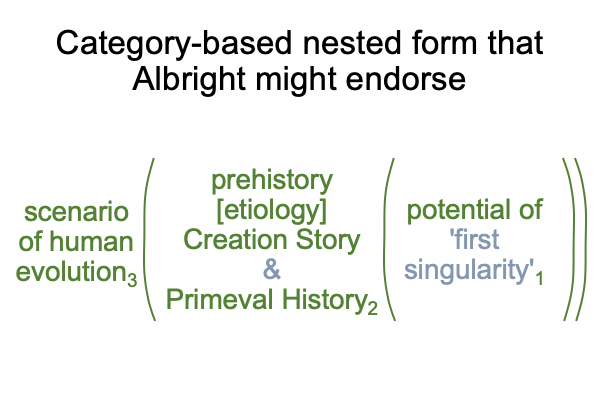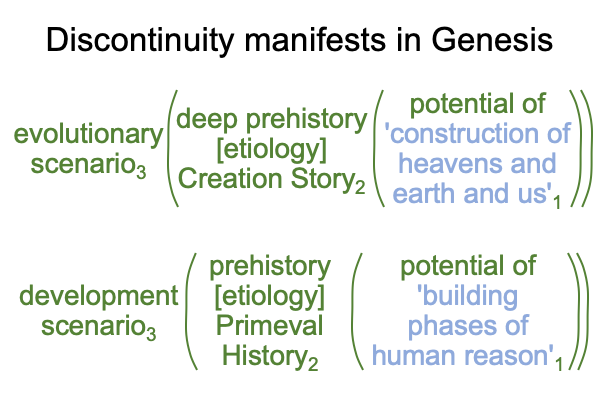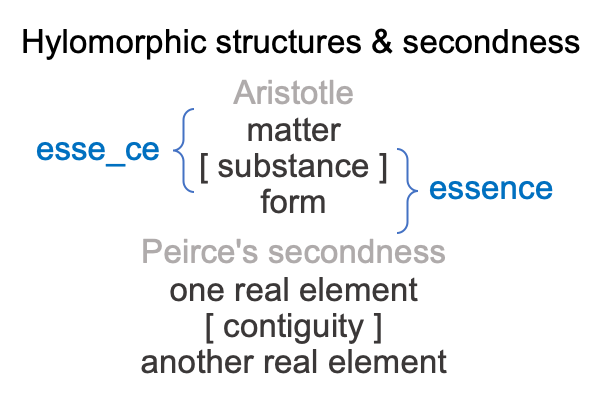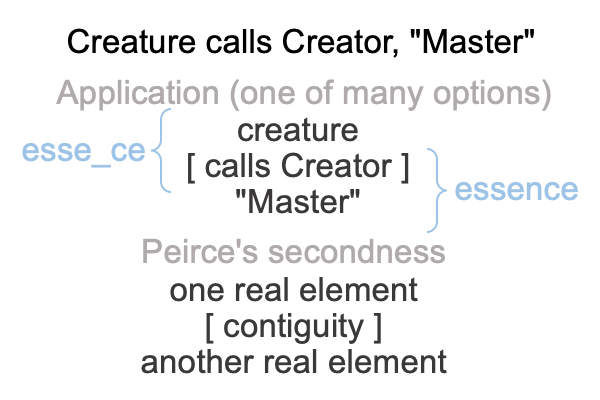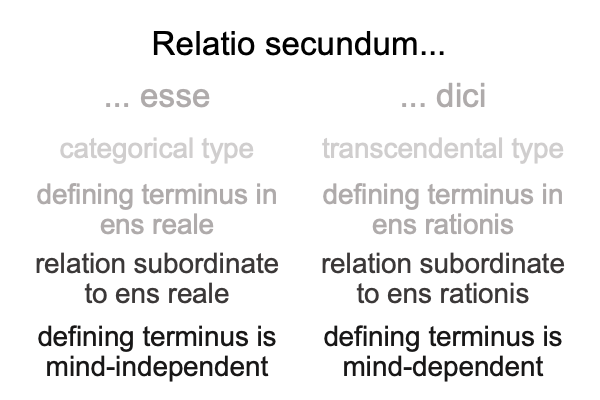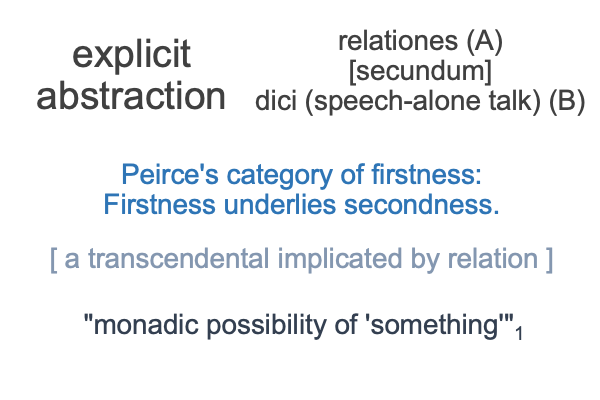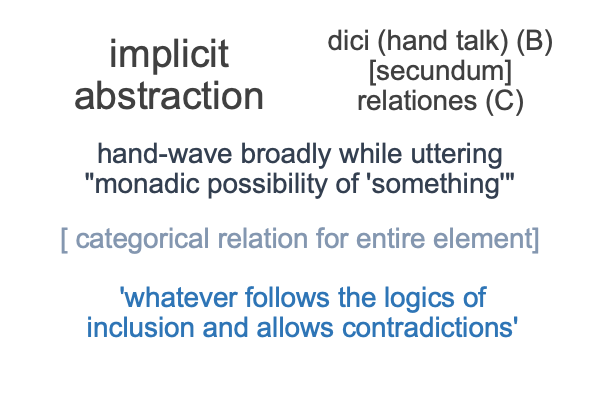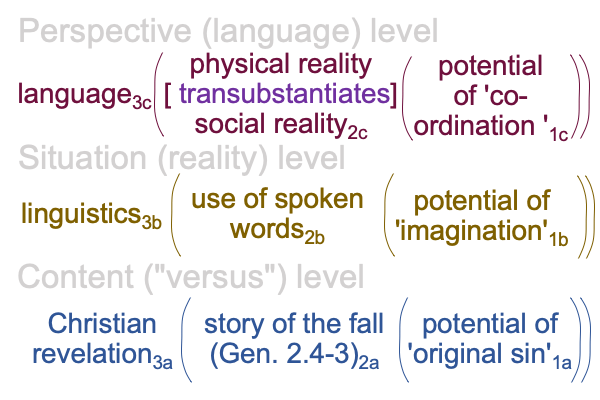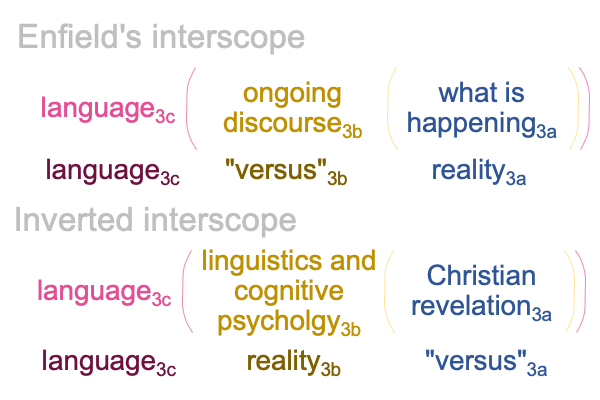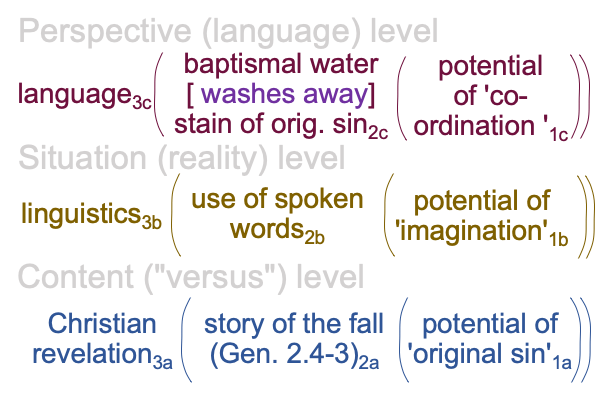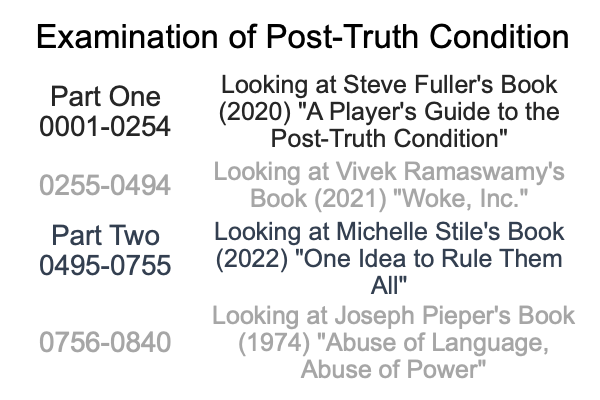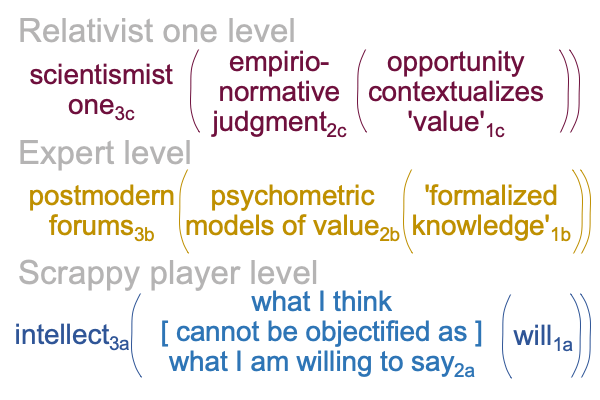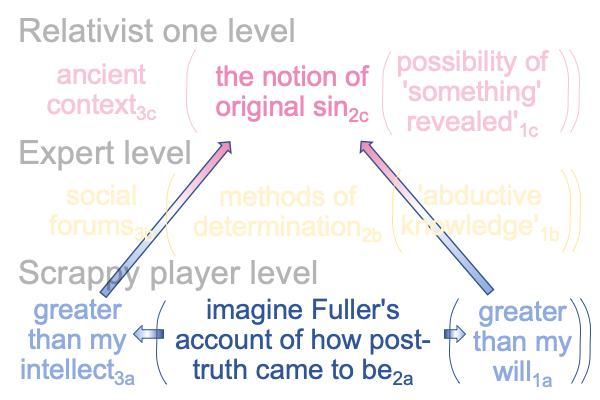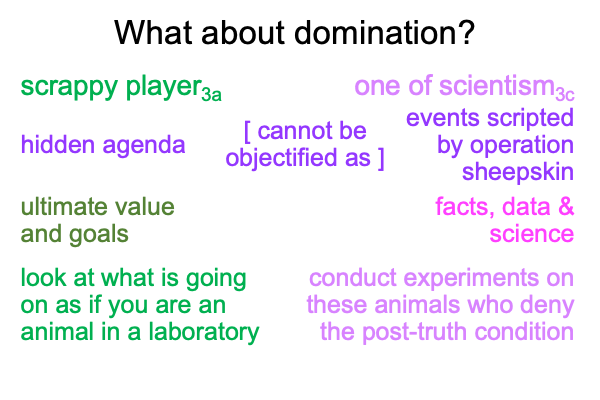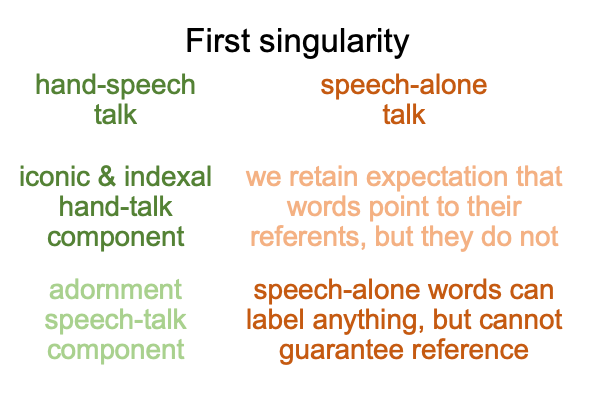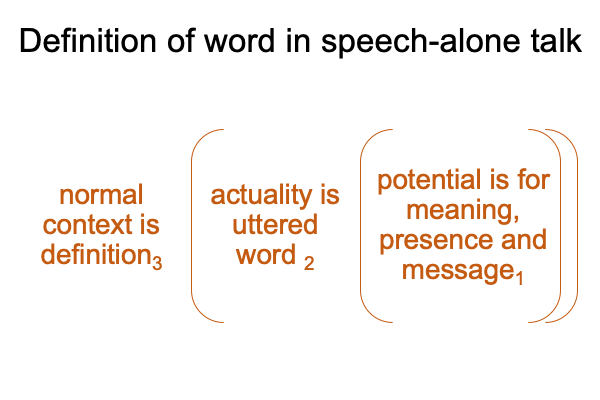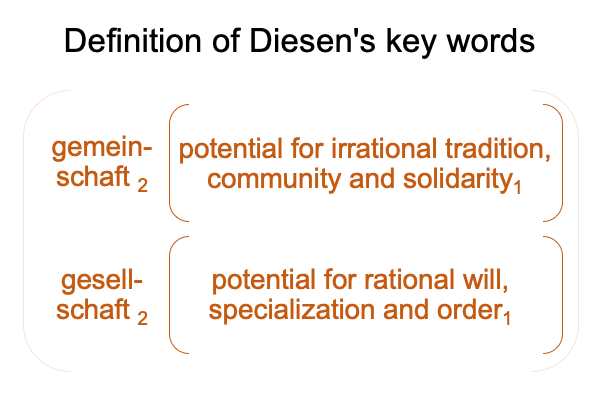Looking at Alexei Sharov and Morten Tonnessen’s Book (2021) “Semiotic Agency” (Part 19 of 24)
0161 Today, in 2025, the psychometric Positivist’s judgment looks something like this.
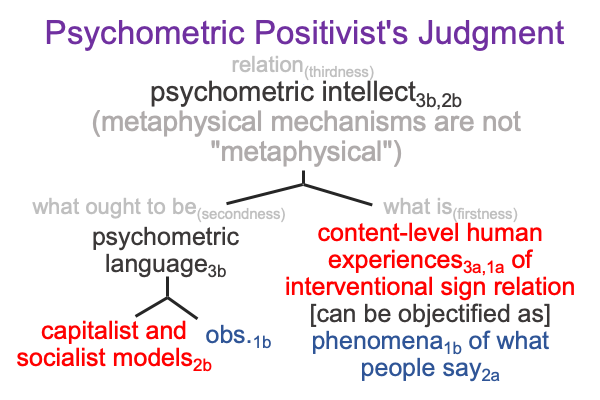
0162 Yeah, the figure looks busy.
But, it still reads like a judgment.
The psychometric intellect (relation, thirdness) brings disciplinary languages honed to produce capitalist and socialist models (what ought to be, secondness) into relation with a noumenal overlay of what people think, that can be objectified as what people say (what is, firstness).
0163 But, I thought that what people think cannot be fully objectified as what people say.
Ah, capitalist and socialist models substituting in for what people think can be objectified as what people say.
No wonder the judgment associates to the term, “the post-truth condition”.
0164 Remember, experts in the psychometric sciences make a lot more money than the practitioners of biosemiotics, even though the psychometric sciences are, like cybernetics, closely related to biosemiotics.
0165 Allow me to discuss the entire judgment starting with the relation (thirdness).
The psychometric intellect employs two normal contexts, a positivist one3c and expertise3b. Note the subscripts. The subscripts apply to a three-level interscope developed in Looking at Steve Fuller’s Book (2021) “A Player’s Guide To The Post-Truth Condition” (appearing in Razie Mah’s blog in July 2024). Subscripts 1, 2 and 3 correspond to potential1, actuality2 and normal context3. Subscripts a, b and c correspond to contenta, situationb and perspectiveclevels.
The psychometric intellect has a rule. That rule is not quite the same as the mandate of the positivist intellect. The positivist intellect says, “Metaphysics is not allowed.” This constitutes a ban on Aristotle’s formal and final causes. But, what of the psychometric sciences? What do they permit?
0166 Allow me to elaborate.
Natural sciences depend on “truncated” material and efficient causes, because they are necessary for mathematical and mechanical models.
The social sciences fudge, as one sees with the phenomenologist’s Positivist judgment. Social scientists ignore metaphysics. As a result, novel “mechanistic” models reduce observations and measurements of social phenomena to material and efficient causes that slyly incorporate formal and final causation. Metaphysics slips into social science models through an open backdoor.
The cybernetic sciences admit that metaphysics is allowed (and is not ignored). Formal and final causes may appear in mechanistic models of habit. At the same time, “metaphysics” changes its definition to “religious”. So, cybernetic models are “not metaphysical”, because they are “not religious”.
The psychometric sciences apply the cybernetic approach to the political sciences.
0167 The psychometric sciences constitute the situation-level of a three-level interscope. Rather than ignoring metaphysics (like social sciences) or grudgingly accepting them (like cybernetics), the psychometric sciences play a language game. Metaphysical mechanisms are not “metaphysical”, therefore the label cannot apply.
Ah, that makes sense.
This is about politics.
0168 Take a look at what ought to be (secondness) and what is (firstness) for the psychometric Positivist’s judgment.
Expertise involved in the psychometric sciences is geared to explaining observations and measurements of what people say in response to an interventionalist “sign”. Whenever the “system” takes an action, that action impacts people who are not involved in… um… “the decision2c” to take action. Nevertheless, people3a are effected1a. People3a will talk about those impacts1a. Those statements2a become the phenomena2a that experts2b observe and measure1b. Then, the experts3b produce capitalist and socialist models2b, couched in the language of science3c. These models2b offer opportunities1c for “the system”3c to make another “decision”2c.
0169 A cyberneticist may portray the above paragraph as a functional… er… dysfunctional circle.
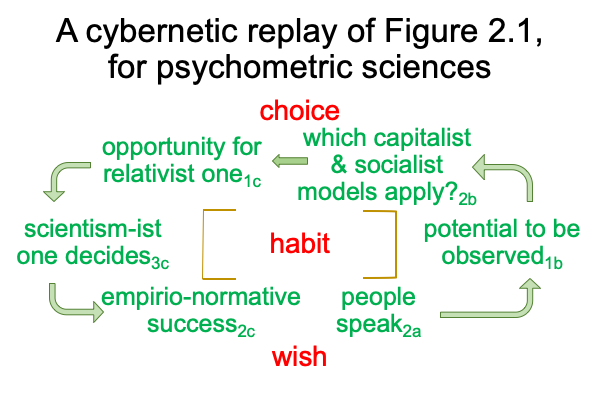
What does this suggest?
Is there more to the functional circle than meets the eye?
0170 Take a moment and examine the first item in point 0152 and the figure in 0153.
I ask, “What is a metaphor for the receptor?”
The answer is, “What people are saying.”
Note that phenomena2a for the psychometric sciences2b are strictly conditioned by a noumenon (what is, firstness) consisting of content-level personal experiences3a,1a of an interventional sign-relation. In other words, phenomena are what people say about an interventional sign-relation.
0171 Where does this interventional sign-relation come from?
Some deciding body (technically, the relativist one3c) makes a decision2c based on an opportunity1c justified by capitalist and socialist models2b, constructed by experts3b, on the basis of psychometric data1b.
0172 What about this “strictly conditioned” business?
Well, people say a lot of things. The expert is only interested in statements that (1) concern the person’s experiences2ain regards to an interventional sign-vehicle2c and (2) are capable of becoming data1b for capitalist and socialist models2b. So, the psychometric expert3b dismisses almost everything that anyone says and only record statements relevant to their models2b.
0173 Now, look at the title of the above figure.
The cyberneticist does the same conditioning for observations and measurements.
The cyberneticist triggers the receptor that initiates the functional circle.

